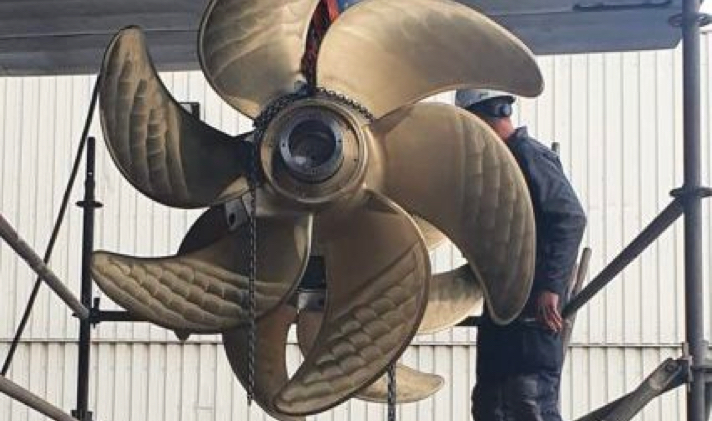Rederij Doeksen’s latest addition to the fleet, LNG ferry Willem Barentsz, is currently at the Damen Ship Repair yard in Harlingen, where new quieter and lighter propellers have been installed. In addition, the bow thruster capacity is being increased.
Each Veth rudder propeller has two counter-rotating propellers. The front propeller had 4 blades and the rear propeller 5 blades. During the trial runs of the Willem Barentsz, it appeared that especially the 5-blade propellers caused vibrations in the saloon above a certain speed. These propellers are now replaced by a 6-blade propeller at the front and a 7-blade propeller at the rear. The vibration measurements show that the higher blade frequency of the 7-blade propellers falls outside the range of the construction above, resulting in a much quieter behaviour.
Furthermore, the underwater hull is provided with a fresh layer of silicone antifouling. For this purpose, a tent made of shrink film must be erected around the underwater hull, in order to create the right conditions for the application of this non-toxic silicone antifouling.
The shipyard assumes that the Willem Barentsz will be able to enter the water again in the middle of this week. Sea trials will then take place to test the new propulsion and bow thrusters.
First Dutch single-fuel LNG ferries
Willem Barentsz entered into service on 3 July 2020. Together with sister ship, the Willem de Vlamingh to enter service later this year, they are the first (single-fuel) LNG-powered ferries in the Netherlands. Both ships will be deployed on the ferry link to the Dutch Wadden Islands Vlieland and Terschelling. More information about the ships can be found here.

Pictures by Bart Zijlstra (Rederij Doeksen).








